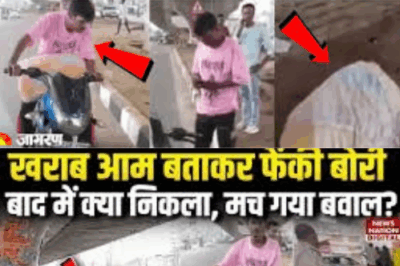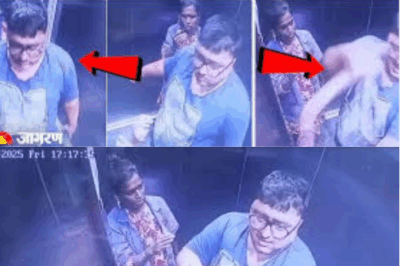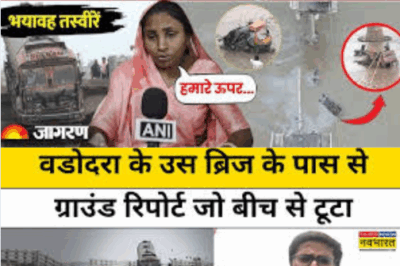Bihar News: Something strange happened in Rahul’s rally! Pappu Yadav and Kanhaiya were insulted? What did PK say?
The recent political drama that unfolded in Patna, the capital of Bihar, has once again brought to the fore the complex interplay of personalities, ambitions, and power dynamics within the opposition ranks, especially the Congress party and its allies. The incident, which quickly went viral on social media, involved the unceremonious removal of two prominent leaders—Kanhaiya Kumar and Pappu Yadav—from a campaign vehicle during a major protest event attended by none other than Rahul Gandhi, the scion of the Congress party, and Tejashwi Yadav, the face of the Rashtriya Janata Dal (RJD) in Bihar. This episode has not only sparked widespread debate about the internal workings of the Congress in Bihar but has also reignited discussions about the party’s status, its relationship with RJD, and the role of young, dynamic leaders like Kanhaiya Kumar in the state’s political landscape.
The backdrop to this controversy was a high-profile protest in Patna, organized to showcase opposition unity and highlight pressing issues. Rahul Gandhi himself was present, lending the event both national attention and a sense of urgency. As is customary in such political rallies, senior leaders were to share space atop a specially decorated campaign vehicle—a symbolic platform for unity and collective resolve. Tejashwi Yadav, the RJD leader and former Deputy Chief Minister of Bihar, stood alongside Rahul Gandhi, presenting a picture of alliance solidarity. However, as Kanhaiya Kumar and Pappu Yadav attempted to join them on the vehicle, they were brusquely pushed off, an act that was captured on video and swiftly circulated across various media platforms.
The incident left many observers puzzled and outraged. Was it a matter of limited space, or did it reflect deeper fissures within the opposition alliance? While only Rahul Gandhi can truly answer whether the exclusion was due to a lack of space on the vehicle or a lack of space in the party’s heart, the optics were damaging. Kanhaiya Kumar is an official Congress leader, a member of the party’s Central Working Committee (CWC), and a figure with a national profile. Pappu Yadav, though not officially a Congress member, has declared his allegiance to the party and is a well-known political figure in Bihar. Their public humiliation, therefore, raised serious questions about the inclusivity and internal democracy of the Congress party, as well as its ability to manage alliances and accommodate diverse voices.
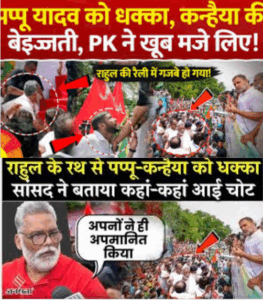
The video of the incident quickly became fodder for rival parties, who seized the opportunity to ridicule the Congress and highlight its apparent disarray. Prashant Kishor, the leader of Jan Suraaj Party and a prominent political strategist, weighed in on the controversy. In his remarks, Kishor acknowledged Kanhaiya Kumar as one of the most talented and influential Congress leaders in Bihar. He noted that, despite being a Congress member, Kanhaiya’s abilities and potential were undeniable, and if the party failed to utilize his strengths, it was a reflection of its own strategic shortcomings. Kishor argued that the Congress in Bihar had become little more than a satellite or “pichhlaggu” (follower) of the RJD, with the latter’s leadership wary of allowing dynamic leaders like Kanhaiya Kumar to rise lest they pose a challenge to the established hierarchy.
Kishor’s comments struck a chord with many political observers. He pointed out that the leadership of the RJD, particularly those close to Lalu Prasad Yadav, was unlikely to support the ascendance of leaders like Kanhaiya Kumar within the Congress. The fear, he suggested, was that new and capable politicians might disrupt the existing power equations and threaten the dominance of the RJD within the alliance. This, according to Kishor, explained why the RJD would never want Kanhaiya Kumar or other talented young leaders to become active and influential in the Congress, especially in Bihar.
The incident also highlighted the broader malaise afflicting the Congress party in Bihar. Despite being a national party with a storied history, the Congress has struggled to maintain its relevance and organizational strength in the state. Its alliance with the RJD, while strategically necessary, has often relegated it to a junior partner status, with little say in the major decisions or the distribution of power. The exclusion of Kanhaiya Kumar from the campaign vehicle, despite his status as a CWC member, was seen by many as symptomatic of the party’s diminished standing and its inability to assert itself even within its own ranks.
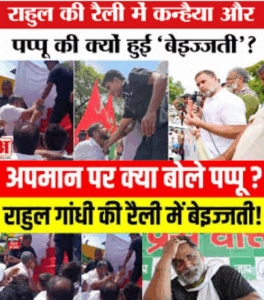
Political analysts have long argued that the Congress’s failure to nurture and promote local talent has contributed to its decline in states like Bihar. Leaders like Kanhaiya Kumar, who bring with them youth appeal, ideological clarity, and mass connect, are seen as assets who could potentially revive the party’s fortunes. However, the party’s reluctance or inability to give them a prominent platform has often led to frustration and disillusionment among its supporters. The recent incident in Patna only served to reinforce the perception that the Congress is either unwilling or unable to change its ways, preferring instead to maintain the status quo and defer to its more dominant allies.
The reaction from the public and the media was swift and, in many cases, unforgiving. Questions were raised about the Congress’s internal democracy, its willingness to accommodate dissenting voices, and its capacity for self-renewal. The fact that a CWC member was not allowed to share the stage with the party’s top leadership was seen as a clear indication of the party’s internal contradictions and its lack of vision for the future. For many, it was a missed opportunity to project a united and inclusive front, especially at a time when the opposition is seeking to challenge the dominance of the ruling Bharatiya Janata Party (BJP) at both the state and national levels.
The incident also brought into focus the challenges of alliance politics in India. While coalitions are often necessary to counter powerful adversaries, they also require careful management of egos, ambitions, and competing interests. The Congress’s experience in Bihar is a case in point: its alliance with the RJD has given it a foothold in the state, but at the cost of its autonomy and ability to project its own leaders. The episode involving Kanhaiya Kumar and Pappu Yadav is a reminder that alliances, unless managed with sensitivity and mutual respect, can easily become sources of friction and public embarrassment.
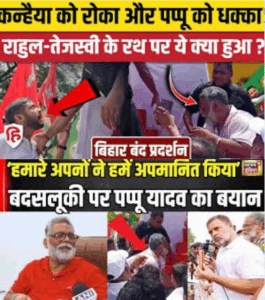
For Kanhaiya Kumar himself, the incident is both a setback and an opportunity. On the one hand, it highlights the obstacles he faces within his own party and the broader opposition alliance. On the other hand, it has brought him renewed attention and sympathy, especially among young and progressive voters who see him as a symbol of change and hope. His ability to navigate these challenges and assert his place within the Congress will be closely watched in the months ahead, as the party prepares for crucial elections in Bihar and beyond.
Pappu Yadav, too, finds himself at a crossroads. A seasoned politician with a reputation for being outspoken and independent-minded, he has often found himself at odds with the mainstream leadership of both the Congress and the RJD. His exclusion from the campaign vehicle, despite his public declaration of loyalty to the Congress, is a reflection of the party’s ambivalence towards him and its broader struggle to accommodate maverick leaders.
The broader implications of the incident for Bihar politics are significant. The state has a long history of complex caste and community dynamics, shifting alliances, and charismatic leaders. The Congress, once a dominant force, has been reduced to a marginal player, struggling to find its voice amid the competing pressures of coalition politics and internal dissent. The incident in Patna is a stark reminder of the challenges that lie ahead for the party if it hopes to regain its relevance and reconnect with the people of Bihar.
In conclusion, the spectacle of Kanhaiya Kumar and Pappu Yadav being pushed off the campaign vehicle during a high-profile protest in Patna is more than just a momentary embarrassment for the Congress party. It is a reflection of deeper issues within the party and the opposition alliance in Bihar—issues of leadership, inclusion, and strategic vision. As the video of the incident continues to be shared and discussed, it serves as a cautionary tale for political parties everywhere: the importance of unity, the need to respect and promote talent, and the dangers of allowing internal rivalries and insecurities to overshadow the larger cause. Whether the Congress will learn from this episode and chart a new course remains to be seen, but for now, the incident stands as a vivid illustration of the challenges facing India’s grand old party in one of the country’s most politically vital states.
Play video :
News
Sad News as Aishwarya Sharma brokedown after Neil Bhatt’s 2nd Marriage after her DIVORCE !
Sad News as Aishwarya Sharma brokedown after Neil Bhatt’s 2nd Marriage after her DIVORCE ! The world of Indian television…
After the blue drum, the body of a girl was found in a sack in Ludhiana, thrown on the road saying that the mango was rotten
After the blue drum, the body of a girl was found in a sack in Ludhiana, thrown on the road…
Mumbai Thane Life Video: Friend’s father got angry because the lift door was closed, slapped the 12 year old child
Mumbai Thane Life Video: Friend’s father got angry because the lift door was closed, slapped the 12 year old child…
Gujarat Bridge Collapse Update: Horrific pictures of the bridge accident in Vadodara, eyewitness told the whole story
Gujarat Bridge Collapse Update: Horrific pictures of the bridge accident in Vadodara, eyewitness told the whole story On July 9,…
Gujarat Bridge Collapse: The bridge connecting Vadodara-Anand collapsed, what did the policeman say?
Gujarat Bridge Collapse: The bridge connecting Vadodara-Anand collapsed, what did the policeman say? In the early hours of July 9th,…
Can Yaman’dan Demet’e duygusal sözler: “Senin için sadece saçımı değil, canımı da veririm.”
Can Yaman’dan Demet’e duygusal sözler: “Senin için sadece saçımı değil, canımı da veririm.” . . . Can Yaman’dan Demet’e Duygusal…
End of content
No more pages to load


